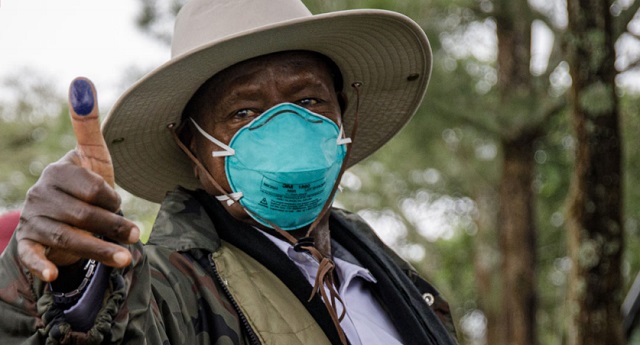
How he has done what he has done and what the people have achieved
Kampala, Uganda | KAVUMA-KAGGWA | On Jan. 26 the people of Uganda were in great joy and jubilation everywhere in the country, remembering the day January 26, 1986, when the National Resistance Army (NRA) liberation forces captured Kampala and wiped out the rule of the tyrannical regimes which had put a firm political grip on this country for a very long time.
The day when the NRA forces captured Kampala was actually January 25, 1986, but President Yoweri Museveni changed it to January 26, 1986 because January 25, would coincide with day when General Idi Amin overthrew the Government of Milton Obote which was January 25, 1971.
The People of Uganda are now living in what we call “the 35 years of great political stability”. It is known world over that when a country is politically stable, it develops economically and citizens develop in all areas of life. It is also known world over that when a country is politically unstable, it does not develop and the people do not develop.
Uganda is unique because, in East and Central Africa, it is the only country which has had nine presidents since the 1960s when these countries achieved Independence. We say nine presidents because Milton Obote ruled twice in what was known as “Obote 1, 1966-1971” and “Obote II, 1980-1985”. All this is because of what happened in Uganda on May 24, 1966, when forces of the Uganda army on orders of Obote attacked the palace of the king of Buganda, the late Kabaka Fredrick Mutesa II during what is historically known as the 1966 Buganda crisis.
Another unique factor in Uganda is the way leaders have come to power with “gunfire” behind them.
Those presidents who came to power with “gunfire” behind them were: Milton Obote (1966), General Idi Amin (1971), Prof. Y.K Lule (1979), General Tito Okello Lutwa (1985), and General Yoweri Museveni (1986).
Those Presidents who left power unceremoniously with “gunfire” behind them were: Sir Edward Mutesa II (1966), Milton Obote (1971), General Idi Amin (1979), Milton Obote (1985) and General Tito Okello Lutwa (1986). Museveni is still the president but I have a feeling that in 2026 his body will probably send him a signal advising him to retire from active politics.
Succeeding where others failed
President Yoweri Museveni is the ninth President since Independence in October 1962. He has led this country for 35 years; much longer than the previous 8 presidents combined. He has succeeded where others failed.
Now many people are saying that with the multi-party system fully entrenched in the Constitution, plus the solid foundation of democracy, rule of law and constitutionalism flowing smoothly in the blood of our politics, it is only President Museveni who will hand over political power smoothly to the 10th president after the 2026 general elections.
President Museveni has many other big achievements which have brought complete peace and tranquility and development. So how has he succeeded where others failed?
In my study of President Museveni, I have observed one remarkable quality which other Ugandan future leaders and politicians should copy.
President Museveni is one person who works out his political plans over a long time. He plans four, five, ten, twenty years ahead and beyond. His brain is on politics 24 hours a day and he never involves himself in what we call “management by crisis”.
He started politics at an early age and the political events in Buganda in 1966 and in Uganda in 1971 when General Amin took over in a coup-d’état, possibly shaped his political mindset. He started planning how he will lead Uganda in future.
He decided on undergoing military training of some sort first, and later on worked with Baganda very shrewdly so as to achieve what he wanted.
After completing his university education at Dar es Salaam University where he had founded FRONASA (Front for National Salvation), he quickly moved to Mozambique and joined FRELIMO of Edwardo Mondlane and Samora Machel who were fighting the Portuguese for the Independence of Mozambique. That guerilla war really toughened the young Museveni for future military and political adventures.
Later on, he came back to Dar es Salaam and joined other Ugandan exiles who were planning to overthrow the Amin Government.
In 1972, he fully participated in the unsuccessful invasion of Uganda. That was the time when Baganda Elders (Paul Kavuma and others) started to know who Museveni was. He mobilised many young fighters who were trained in Tabora and Mwanza.
Later in 1978 and 1979 he participated in the Moshi Conference which elected Prof. Y.K. Lule to be President after Idi Amin.
He was part of the Uganda National Liberation Army (UNLA) which came in with the Tanzanian Army and overthrew Amin in April 1979. He was Minister for Defence in the short lived Government of Prof. Lule, the Binaisa Government as well as the Paul Muwanga “Military Commission” government.
 The Independent Uganda: You get the Truth we Pay the Price
The Independent Uganda: You get the Truth we Pay the Price



Mzee Kavuma, thank you for expressing your honest thoughts and views about Uganda political roadmap. But believe me, the emerging classic despot puppet and his gang are going to attack you, threaten you, blackmail you, call you names, insinuate how you’re not a muganda, name it. But don’t succumb to this type of blackmail because old age is wisdom.
Hear this idiot writing crap! That Museveni will hand over power democratically in 2026! He writes about roads; let him go to him go to Kenya, Tanzania, Rwanda etc and see how you the real roads look like .Museveni has been lucky as Uganda has many shallow minded people like Kavuma.
This is one person who does not know what he is talking about.Go to hospitals or schools and see the mismanagement and corruption.